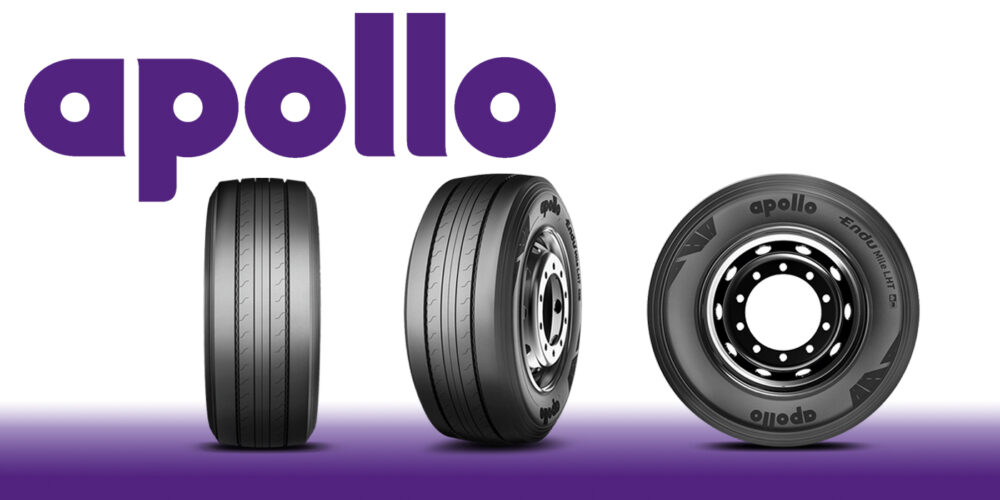What will the commercial over-the-road truck tire (or its worthy replacement) look like in 10 to 20 years? Although we can’t evaluate currently unknown innovations, we can look at developments in other tire types: race, passenger car, aircraft, military and other niche market applications.
We now have run-flat passenger car tires that have successfully obsoleted spare tires in some vehicles. Initial complaints of harsh ride, stranded motorists and higher tire cost are being addressed gradually with technology improvements. Certain space-conscious new vehicle designs no longer accommodate the weight and space of a spare. However, to-date, run-flats still account for less than 2 % of all new passenger tires and carry a significant weight penalty of 10% to 15%. This isn’t much on a 35-lb. car tire; the absence of a fifth tire/wheel, jack, lug wrench, etc. more than offsets the extra 2 to 4 lbs. of each run-flat.
However, this concept would add 15 to 20 lbs. per tire to every 295/75R22.5, and a total of approximately 315 lbs. to every 18-wheeler. Also, since truck tires operate at much higher inflation pressures and loads, the run-flat concept of more rigid, load supporting sidewalls will likely not extrapolate to modern truck radials. Consider also that run-flat car tire applications have been driven by vehicle manufacturers in search of fuel efficiency and packaging constraints, while future truck tire designs will be driven, to a much greater extent, by end users.
While run-flats are designed to allow motorists to travel to the nearest tire service facility, they are not designed to continue on to a load drop or distant truck terminal. So, what we can expect to see instead is fairly rapid growth of self-sealing truck tires. Truck tires manufactured with an integral sealant are designed to stop inflation loss when punctured, generally sealing injuries up to ¼-in. until long-term plug/patch repairs can be made to preserve casing integrity. There is currently a weight penalty for this new category of truck tires, but we can expect this difference, and fuel economy, of self-sealing tires to become minimal compared to conventional tires.
Another trend recognizes that truck tire rotations to different wheel/axle locations are becoming minimal, except when tires are dismounted for retreading. This opens an opportunity for directional and asymmetric tread designs. This is especially significant as single wide tires replace duals on drive and trail axles, since directional drive or trail tires would no longer have to be reverse mounted for inner and outer dual fitment.
Remember the primary reason duals were introduced was that the tire industry had neither the reinforcement materials nor the technology to raise single tire load ratings as fast as truck axle loading was increasing in the period from 1917 through the mid-1920s. Single wide tires should become the norm, beginning with weight-conscious bulk haulers, then extending throughout the entire high-speed linehaul segment. They will provide improved fuel efficiency versus comparable dual tire fitments, reduce mounted tire inventories, and require eight fewer TPMS sensors on a typical 18-wheeler.
Directional tread patterns to date have shown limited success in retarding irregular or fast wear in some applications, but future use might also deliver improvements in rolling resistance, wet traction (especially under light load conditions, and control of splash/spray patterns during heavy rain conditions.
Chines (sidewall contours resembling deflectors) currently used on some aircraft tires to direct tire spray away from jet air intakes during heavy rain take-offs and landings may also be incorporated to reduce a major complaint many motorists have when passing trucks at highway speeds.
Some futurists have predicted that rubber tires may be replaced by complex metal, plastic or exotic materials woven in geometric shapes designed to roll, support loads, deliver wet and dry traction and transfer cornering forces with the advantages of being puncture proof, having replaceable wear surfaces and requiring no inflation pressure beyond ambient. A brief survey of industry experts suggests that such devices might find limited use in exotic military applications, but that development for highway use in the next 20 years seems unlikely.
The information presented here is just an overview, but considering the progress made by tire manufacturers in the past several decades, you never know what the future holds.













